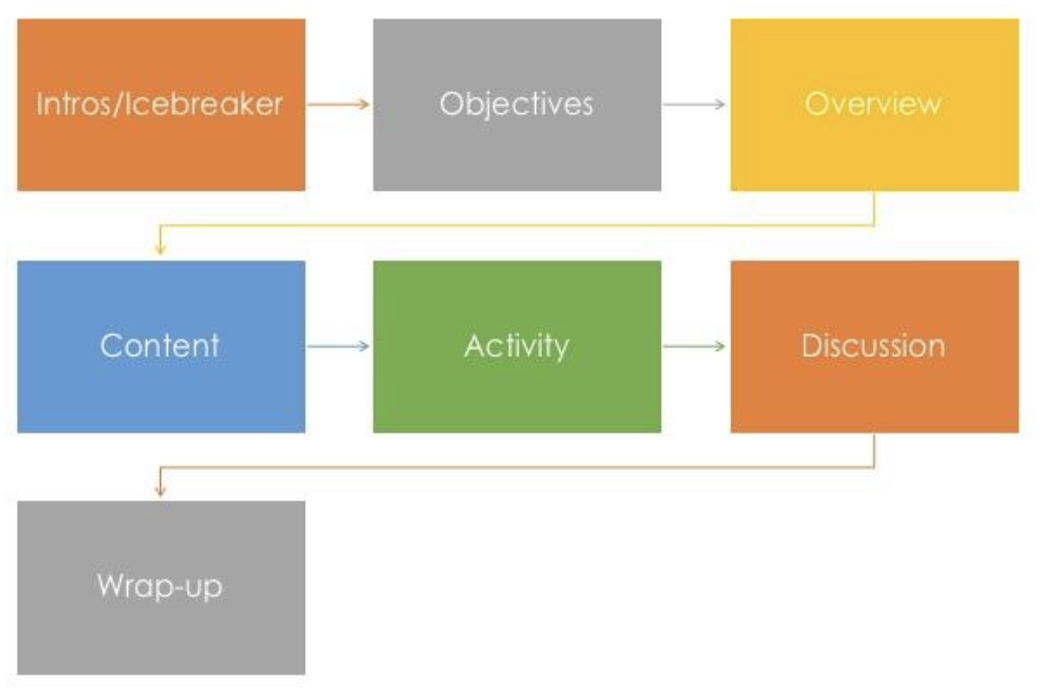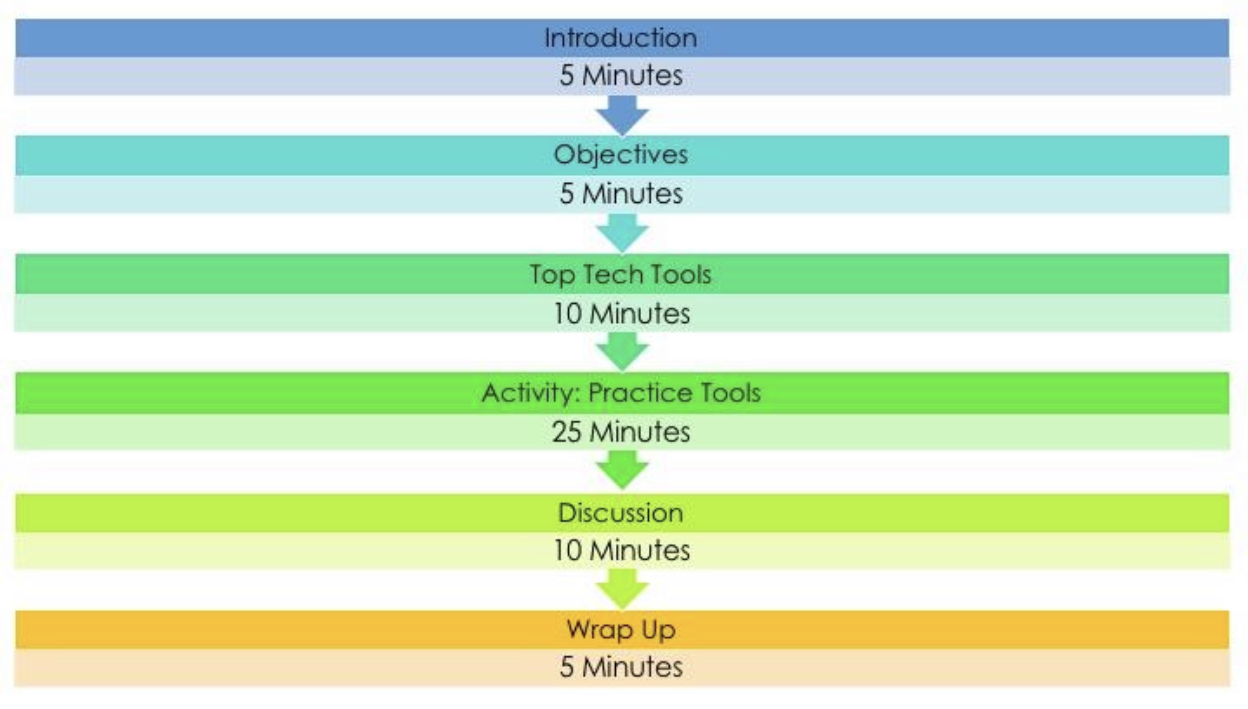Module 4: Engagement Tips before the Workshop Starts
There are a few things you can do to engage your participants before the workshop even starts, to set the tone and increase involvement as early as possible.
Tips Before Starting
- Greet each attendee as they come into the workshop. Use this time to find out about each individual and engage in a little small talk.
- Give each participant a cue card or sticky note when they come in and ask them to write down one thing they’d like to learn or gain from the workshop
- Offer a prize. Ask people to drop their business card for a drawing to take place later. This is a great way to get information about your participants, gather leads, and learn about who your audience is.
Intros/Icebreaker
At the beginning of the session, do a round robin of introductions. Request specific information such as full name, company, and title or role within the company. During this part of the workshop you can have each person share something they want to get out of the session or why they came.
Other “getting to know you” types of things you can ask include something unusual about the person, an interesting thing that happened to them recently, or a fact most people don’t know about them. These types of questions set the mood and relax everyone. Before the workshop, you should have received a list of attendees. Use this list to take notes as the attendees go around introducing themselves.
Don’t forget to introduce yourself. Have a slide ready with some information about your company, product, or service. Also pass out a flyer and business card to each attendee so that they have something to take home. Do so as the participants arrive before the workshop. If participants are unfamiliar with you and your company, this is a great opportunity for you to deliver a 30-second summary that captures what you do and the benefits you offer, designed to increase curiosity about your business.
Objectives
Every workshop is driven by specific learning objectives. Decide what exactly that is and then create a description that includes the outcome you want your audience to have when they leave. This should:
- Include an action verb that describes exactly what the participant will be able to do by the end of the session.
- Be written in the second person, using “you” to address the participant directly.
- Be as clear and specific as possible; paint an image for the participant of what they will be doing.
Examples would be: “Select technology tools that will help you grow your business,” or “Practice using two new tools that will help you save time and money.”
Overview
The overview gives the participants a brief outline of what they can expect from the session.
Some people choose to present the objectives before the overview while some prefer to do so afterwards. Whichever you are comfortable with is fine. The key is to give the participants an idea of what they can anticipate during the time you are together.
Todd McCall
Instructor
I help practices who are marketing professional services get the attention they deserve by developing an online presence that converts visitors into clients.
Pricing Information
Ready to move forward? We have pricing options that range from full access membership to a la carte courses.
Membership Information
Membership in Coffee Break University has its benefits. Learn more about what our Power Practice Network has to offer.


